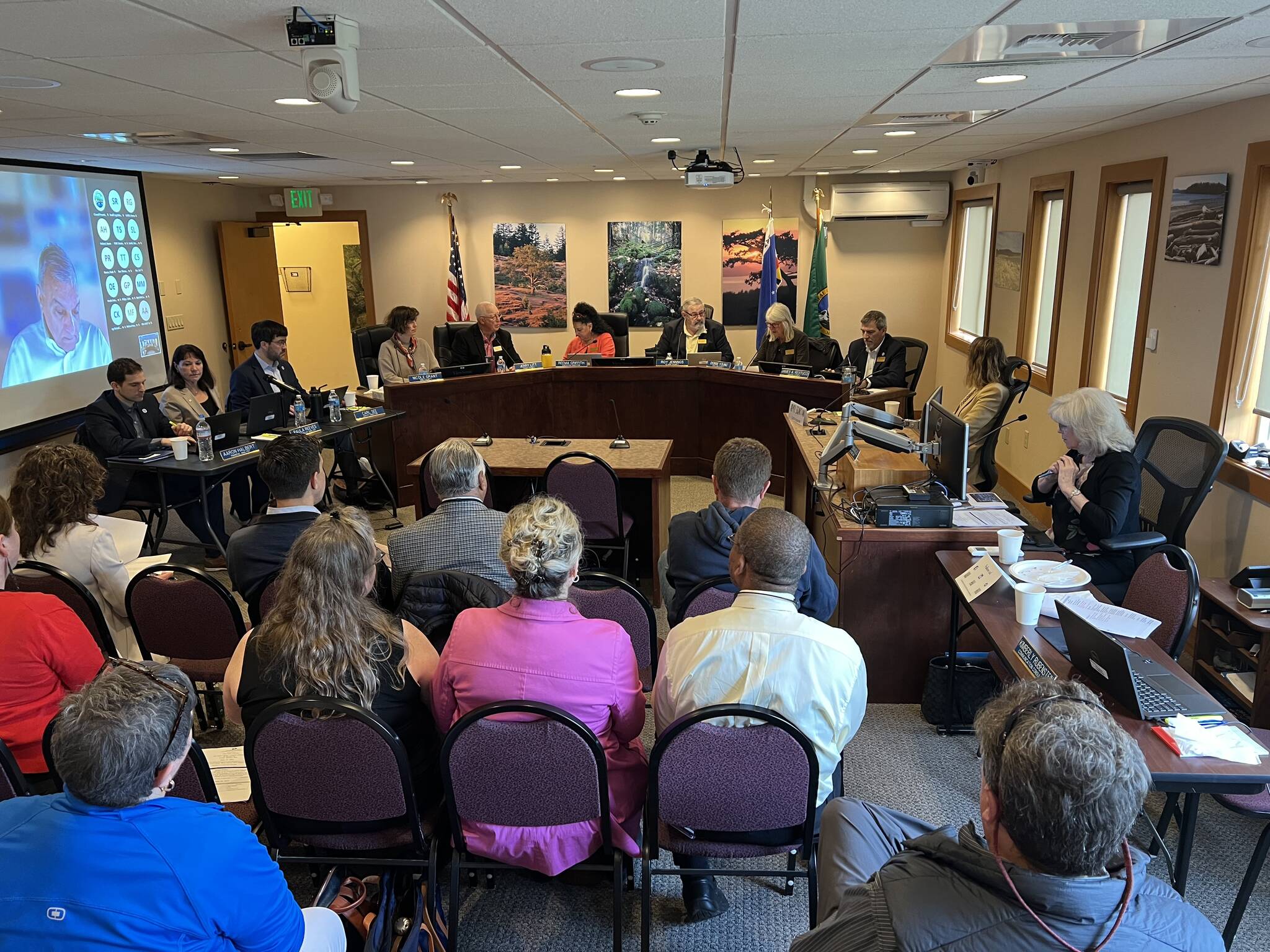The Washington State Transportation Commission held its monthly meeting in Friday Harbor on June 21, and their timing couldn’t have been better for a community reeling from ferry disruptions, delays, and cancellations.
The Commission is a seven-member body of citizens appointed by the Governor for six-year terms, with the Washington State Department of Transportation Secretary and a representative from the Governor’s Office serving as ex officio members. The Commission provides an open public forum for transportation policy development, reviewing and assessing how the entire transportation system works across the state. In addition, as the State Tolling Authority the Commission adopts state highway tolls and sets ferry fares.
Although the Commission is charged with presenting a comprehensive and balanced statewide transportation plan consistent with the state’s growth management goals every four years to the Legislature, their responsibilities do not include making actual decisions. That responsibility ultimately rests with Patty Rubstello, Assistant Secretary of WSDOT/Ferries Division, who was also in attendance at the June 21 meeting.
Early in the meeting, several of the Commissioners commented on the difficulty of making San Juan Island reservations to get on and off the island. Although the meeting had been scheduled months in advance, several commissioners experienced first-hand the ferry reservation system and the inherent challenges of traveling to the islands.
County Council member Jane Fuller and Town of Friday Harbor Mayor Ray Jackson made welcoming statements to the Transportation Commission members and staff before the Commission was provided with several presentations by County and Town staff. Presentations included: a picture of significant transportation issues in San Juan County; implications of climate change and sea-level rise for the San Juan Islands’ infrastructure; island economy challenges and successes; air and sea access to the San Juan Islands; along with a WSDOT regional overview.
One of the primary functions of the Commission’s meeting in Friday Harbor was to consider three ferry fare increase proposals, along with reviewing recommendations and public comment gathered on all three. The Commission was to identify one ferry fare increase proposal with a revenue funding target of 4% set by the Legislature in the 2023-25 Legislative Conference Budget.
The Commissioners considered three proposals: The first alternative would be a non-differential fare increase to all fares (passengers and vehicles) by 4% in October 2023 and October 2024, with a multiride discount of 20%; the second alternative would increase vehicle fares at a higher rate than passengers, assuming a 3.5% increase for passengers and 4.5% increase for vehicles on Oct. 1, 2023, and Oct. 1, 2024, also with a multiride discount of 20%; and option three, increasing both passenger and vehicle fares by 4.25%, while increasing the multiride discount to 21%.
The third option, which was supported by a subcommittee recommendation, was significantly more popular among people polled in a survey the Commission put out earlier this year. This option would benefit ferry riders that use the ferries frequently, using multiride discount passes, while distributing the rate increase equally between passengers and vehicles.
Following public comment, the Commission unanimously voted to support option three, raising ferry fare rates 4.25% for both passengers and vehicles, while increasing the multiride discount to 21%. The fare proposal will next be filed with the Department of Revenue, and a public comment period will be open through July until the WSTC holds an adoption hearing Aug. 10. The WSTC will then file the final approved tariff changes with the Department of Revenue, with the rate increases taking effect Oct. 1.
According to State Representative Alex Ramel of the 40th District, “Four percent is a lot. It’s a lot,” he stated. “The legislature authorized, with these fares over two years, a $28 million increase for the state ferry budget. But at the same time, we put about $170 million in state money to increase the ferry budget. So as we’re trying to address workforce challenges, reliability, increased maintenance for an aging vessel fleet while we wait for vessels to come online, we’ve got more money to spend.”



